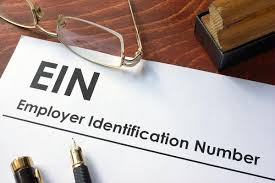When you file your taxes each year, you are responsible for paying a certain amount of money. This money is your tax liability. Tax liability can be a complicated concept, but it is important to understand how to calculate your taxes correctly. So, this guide explains tax liability, provides some income examples, and walks you through how to calculate it.
What Is A Tax Liability?
Tax liability is the amount a person or entity owes to the government in taxes. It can be federal, state, or local and include income taxes, property taxes, and other taxes.
The taxpayer must pay tax liabilities to avoid penalties, such as fines or jail time. Hence, many factors, including income, deductions, and credits determine the amount of tax liability. Additionally, you can pay it in a lump sum or installments.
What Are Some Examples Of Tax Liability?
Examples of Tax liability include income, property, sales, and estate taxes.
#1. Income Taxes
Income taxes are one of the most common types of tax liability that people have to pay. Everyone who earns income from working or from investments must pay income taxes. The income taxes you owe depends on your income level and the tax bracket you fall into. The government uses income taxes to help pay for public services and programs.
Income taxes can be hard for some people, especially if they are in a high tax bracket. However, it also helps to fund important public services and programs that benefit everyone. Without income taxes, the government will not be able to provide the same level of services.
#2. Property Taxes
As a homeowner, you are responsible for paying property taxes to your local government. Property taxes are typically calculated as a percentage of the appraised value of your home. The government set the tax rate, which may change from year to year.
In addition, property taxes are to fund many government services, including schools, police and fire protection, and infrastructure. In most cases, you will pay your property taxes through your mortgage lender. They will hold the money in an escrow account and pay the taxes on your behalf.
#3. Sales Taxes
Sales taxes are among the common types of tax. This is because most transactions involve the sale of goods or services. The tax rate varies in the state but is typically around 7%. This means that for every $100 spent on a good or service, the customer will owe $7 in taxes.
Generally, the seller collects sales taxes and then remits the taxes to the government. However, some states require the buyer to pay the tax directly to the government. In either case, the customer is ultimately responsible for the taxes.
Sales taxes are generally regressive, meaning they take a greater percentage of income from low-income earners than from high-income earners. This is because the tax goes to the total purchase price, regardless of the buyer’s income. For example, a $100 purchase will result in the same $7 tax liability for a person earning $20,000 per year as it will for a person earning $200,000 per year.
While sales taxes are necessary government revenue, they can be difficult for low-income earners. This is why many states offer tax exemptions for certain items, such as food and medicine.
#4. Estate Taxes
Estate taxes are taxes levied on the property of a deceased person. The tax depends on the property value, and the estate pays it before any distribution to the heirs.
Meanwhile, estate taxes can be a burden for the heirs, especially if the estate is large or valuable. In some cases, the estate may need to sell the property to pay the taxes. In other cases, the heirs may be responsible for paying the taxes. Hence, this can also discourage people from leaving property to their heirs.
How To Calculate Tax Liability
There are a few things you must first know to calculate your tax liability. These include your filing status, the number of dependents, your total income, and any deductions or credits you’re eligible for. You can use the IRS Tax Tables to determine your tax amount or use the Tax Computation Worksheet if your income is over $100,000 or you itemize your deductions.
Once you have all this information, you can begin to calculate.
- First, determine your taxable income by subtracting any deductions and credits you are eligible for from your total income.
- Next, find your tax bracket by looking up your taxable income in the IRS Tax Tables.
- Finally, multiply your taxable income by your tax rate to determine your tax liability.
What Is An Example Of Income Tax Liability?
Income tax liability is the amount of money a person or business owes to the government in taxes. That is, using the person or business’s taxable income, which is the total income minus any deductions and exemptions. Then, multiply the tax liability by the tax rate to determine the amount owed.
For example, let’s say John has a taxable income of $50,000. His tax liability will be $5,000, which is 10% of his taxable income. This means he owes the government $5,000 in taxes.
Is Tax Liability The Same as Tax Refund?
No, tax liability and tax refund are not the same. Tax liability is the amount of money you owe to the government in taxes. A tax refund is when you get money back from the government because you overpaid your taxes.
What Is Tax Liability vs Tax Due?
Tax liability is the amount of money you owe in taxes. On the other hand, tax due is the money you need to pay in taxes. Many people usually use the two terms interchangeably, but there is a subtle difference between the two. Tax liability is the amount of taxes you owe, while tax due is the amount of taxes you are to pay.
Your tax liability lies on several factors, including your income, filing status, and the number of dependents you have. The amount of taxes you owe also depends on the tax laws in your country or state. In most cases, your tax liability will be less than your tax due. This is because most people are eligible for tax deductions and tax credits, which reduce the amount of taxes they owe.
If you don’t pay, you may be subject to penalties and interest charges. The government may also take legal action to collect the taxes you owe. So, understand your tax and make sure you pay your taxes on time.
What Is A Person’s Tax Liability?
A person’s tax liability is the amount of money they owe in taxes to the government. Before you calculate, know your income, deductions, and any tax credits.
Everyone’s tax situation is different, so it’s important to calculate yours to pay the right amount of taxes. If you owe taxes, you may need to make estimated tax payments throughout the year to avoid penalties.
How Do You Calculate Tax Liability For Someone?
To calculate tax liability, you will need to know the person’s filing status and taxable income. The taxable income is the total income after deductions and exemptions. And the filing status is either single, married filing jointly, or head of household. Then, here’s how to calculate his or her tax liability:
- First, know the person’s filing status.
- Next, calculate his or her taxable income. That’s, taking the person’s total income and subtracting any deductions allowed.
- Then, take the taxable income and multiply it by the appropriate tax rate.
- And lastly, calculate any credits the person may be eligible for. Credits are subtracted from the tax liability and can lower the amount of tax owed.
How Do I Know If IRS Owes Me Money?
You can use Where’s My Refund or call 800-829-1954. If you’re expecting a refund from the IRS, you can check the status of your return online. The IRS posts daily updates to its “Where’s My Refund?” tool, which you can access on its website.
Just enter your social security number, filing status, and the amount of your expected refund. Thus, the tool will tell your refund status, and give you an estimated date of when you can expect to receive it.
On the other hand, if you owe money to the IRS, they will send you a bill in the mail. The bill will list the amount you owe, as well as any interest and penalties that have accrued. If you don’t pay the bill, the IRS will eventually send you a notice of Intent to Levy, which means they will begin garnishing your wages or seizing your property.
How Much Will I Get Back In Taxes If I Make 70000?
If you make $70,000 a year, you can expect to get a tax refund of about $2,000. This is based on the current tax brackets and assumes you take the standard deduction. So, if you have a lot of deductions, you may get a larger refund. If you have a lot of income from investments, you may get a smaller refund.
How Do I Reduce My Tax Liability?
The first step is to understand the different types of taxes you may be liable for. That’s, federal, state, and local taxes and taxes on your income, property, and sales. Each type has different rules and regulations.
The second step is to take advantage of all the deductions and credits that you are eligible for. Deductions reduce the amount of income taxable, while credits reduce the amount of tax you owe. There are many different deductions and credits available, so research to see which ones you qualify for.
By taking these two steps, you can significantly reduce your tax liability. However, remember that taxes are complex, and there is no one-size-fits-all solution. If you have any questions or concerns, speak with a tax professional.
Final Thoughts
Tax liability is the amount of money you owe in taxes to the government. Whether you are a business owner or an individual responsible for paying taxes, understand what tax liability is and how to calculate it. Follow the above steps and the amount left is your tax liability.
Notwithstanding, keep track of your tax liability throughout the year so that you do not owe a large sum of money at the end of the year. You can set aside money monthly to cover for it. This will help you to avoid any surprises come tax time.






